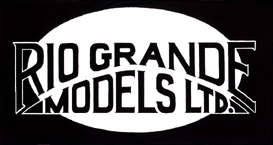

Reference Data.
Incorporated.1918
Corporate Ownership.
Nevada Humboldt Tungsten Mining Co.
1917 – 1918
Humboldt Tungsten Mining Co.
1918-1919
Pacific Tungsten Company
1919 – 1947
Pacific Tungsten Company.
Located 7 miles northwest of Mill City lies Tungsten, a town built around the holdings of the Pacific Tungsten Company. Tungsten was discovered in the area shortly before WWI. During 1917 several mining claims were filed, in March 1917 the Stank mine was filed. Near the Sutton claim a town called Camp Sutton was built. Camp Sutton would later become Tungsten. Regular ore shipments from the area started in November 1917, utilizing teamsters to haul the ore 7 miles to Mill City where it was loaded aboard the Central Pacific Railroad and shipped 50 miles to Lovelock and then to a mill at Tuolon. Only high grade ore was processed in this manner, lower grades remained sacked and XXXX.
W. J. Loring acquired several tungsten mines in March 1918 and incorporated the Pacific Tungsten Company to manage them. These mines consisted of the Stank mine (Bakersfield Copley Group, later Durnen Group), the Banner, Olsen, and Florence mines. The company purchased the neighboring Mill City Tungsten Mining Company in XXX 1918. As part of the deal they agreed to build a new mill of 100-ton capacity to serve both mining groups which was completed on November 11, 1918. This large, modern mill was built as a result of demand for Tungsten for WWI by the Pacific Tungsten Co.
The mill operation included a 24” gauge tramway, reported to be 3 ½ miles long in 1918. A single locomotive of an unknown type was used to haul 3-yard steel ore cars from the mines to the mill. Ore from the Mill City Mining Co. was shipped to Pacific Tungsten’s mill. The mill also processed the ore from the neighboring Humboldt Tungsten Mining Company, which was a separate company managed by L. A. Freidman.
Mill City Development Co. founded by both companies, Humboldt Tungsten Mining Company and the Pacific Tungsten Co. to build water and power lines from the mouth of Rochester Canyon to the town site of Tungsten and the mills. (33 miles long)
During 1917 – 1918 the company produced 12.749 tons of ore, which yielded 2.28% tungsten per ton. In 1918 tungsten was a major industry in Nevada, during that year the state produced a third of the United States tungsten output. Falling demand and prices lead to the mill being closed in Feburary 1919, just two months after it was built. With the end of WWI, the price of tungsten dropped to $1.50 per ?, the mines shut down as a result.
In 1922, the government put a tariff on imported tungsten. Though it was hoped the tariff would restore profitability to the company, it struggled until 1924 when the company was $350,000 in debt. In 1925 the creditors of the Pacific Tungsten Company formed the Nevada-Massachusetts Company and acquired the Pacific Tungsten Co. by suing the Pacific Tungsten Company for the credit owed, and purchasing the company at sheriff’s auction in 1926 for $500.00 . They then acquired the remaining shares of the Mill City Tungsten Co. along with the Mill City Development Co. and the Humboldt Tungsten Mining Company in 1927. Entered arrangement to purchase Humboldt Corp in 1927 and was purchased completely in 1928. Mill City Dev and Humboldt Tungsten Mining Co to the Humboldt Corporation in 1929.
Around 1927 the company acquired two second-hand Plymouth DL-2 locomotives. In 1933 the Nevada-Massachusetts Co. purchased the remaining stock of the Mill City Development Co. and By the 1930s the company produced most of the nation’s supply of tungsten.
During World War II the town of Tungsten grew, with the company employing 280 men. The town, for a time, was the second largest in Pershing County and boasted 110 residential and office buildings, a library, post office, school mercantile and boarding house.
It may have occasionally closed with the depression, then reopened for WWII and the Korean war. The mill remained in operation until 1949 when it shut down. (Tariff reduced, low demand and low metal prices over all)
On December 24, 1949 Patrick McCarran, Nevada’s United States senator announced the Nevada-Massachusetts would reopen on January 2. The mine remained in operation until 1962.
The entire operation came under the controll of General Electric in the 1970s and new buildings constructed. Despite the heavy investment into the property, the mine operated briefly before shutting down in 1982. Today the group of claims makes up the mine is known as the Springer Mine, owned by Silver Predator. The current owners hope to re-open the dormant mine.
Paul Kerr, Geology of Tungsten Deposits Near Mill City Nevada, Nevada Bureau of Mines, Bulletin No 28, No 2, 1934.
History of Mill City Development Co. by C. H. Segerstrom
History of Pacific Tungsten Co. by C. H. Segerstrom
Reference Material Available Online:
Photographs.
Collected Pacific Tungsten Company Photographs.
Images collected from private collections, libraries and historical societies.



